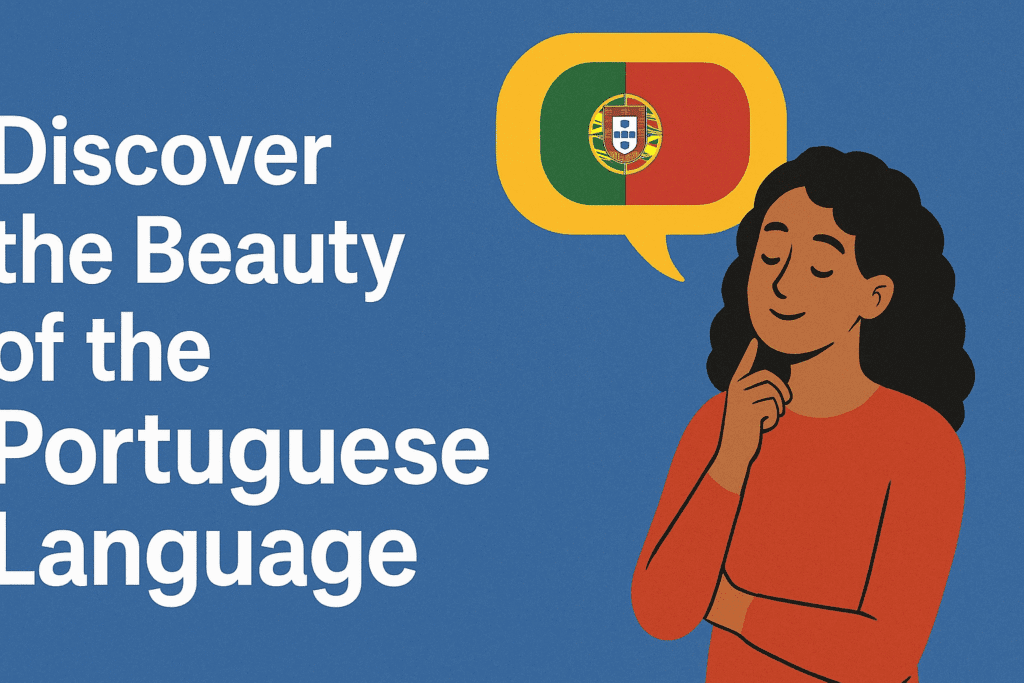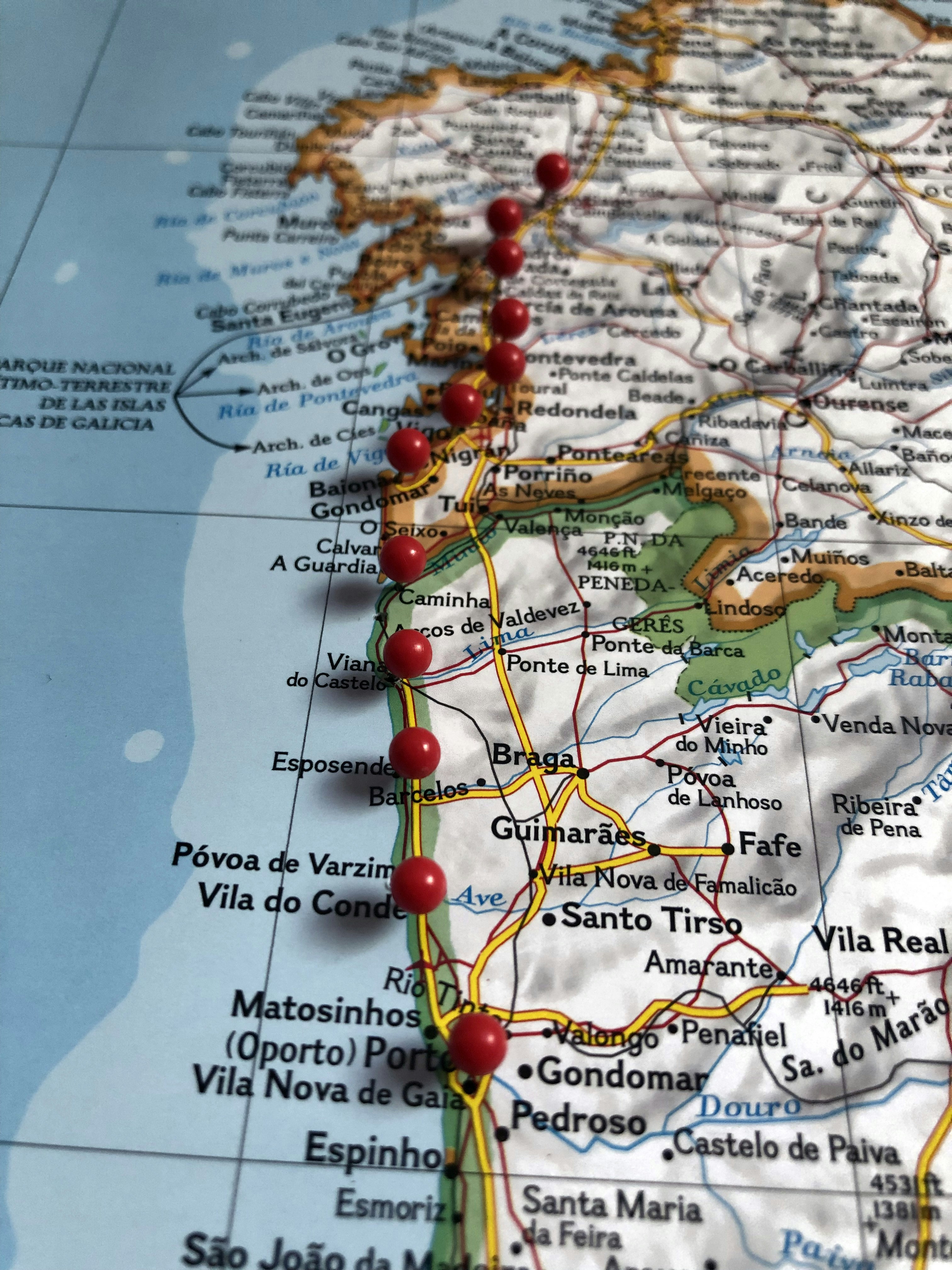Definite and Indefinite Articles: Master Portuguese

What are articles and their function in the Portuguese language? Definite and Indefinite Articles are essential word classes in the Portuguese language, preceding nouns to determine or make their reference indeterminate. They agree in gender (masculine/feminine) and number (singular/plural) with the noun they refer to, playing a crucial role in the clarity and precision of communication. Understanding the function of articles is fundamental for anyone wishing to master Portuguese, whether for formal writing, everyday conversation, or proficiency exams. They help us identify whether we are talking about something specific or something generic, directly impacting the meaning of sentences. There are two main categories: definite articles and indefinite articles, each with its own rules and contexts of use. In this comprehensive guide, we will explore each type of article in depth, providing practical examples and valuable tips so that you can use them confidently and correctly. Understanding the distinction between a definite and an indefinite article is a giant step towards fluency and grammatical accuracy. Definite Articles: Usage, Examples, and Essential Rules Definite articles are used to indicate a specific noun, known to both the speaker and the listener. In Portuguese, they are: o, a, os, as. Their main function is to particularize the noun, making it unique in that context. For example, when saying “o livro” (the book), we are referring to a specific book that has already been mentioned or that is common knowledge. Agreement is a golden rule: the definite article must always agree in gender and number with the noun. If the noun is feminine singular, the article will be “a”; if it is masculine plural, it will be “os”. Let’s look at some clear examples: O carro (masculine singular) A casa (feminine singular) Os meninos (masculine plural) As meninas (plural feminine) The main contractions are: De + o/a/os/as = do, da, dos, das (Ex: Maria’s book) Em + o/a/os/as = no, na, nos, nas (Ex: He is in the office) Por + o/a/os/as = pelo, pela, pelos, pelas (Ex: We passed through the square) A + a/as = à, às (contraction occurs when the preposition ‘a’ is joined with the article ‘a’ or ‘as’. Ex: I’m going to the beach) For example, “I bought a cake. The cake was delicious.” This usage is crucial for textual cohesion and to avoid ambiguities. In some contexts, definite articles are mandatory, such as before superlatives (“The most beautiful flower”) and before names of languages when used as nouns (“Portuguese is complex”). However, there are exceptions, for example, when the language is the direct object of verbs like ‘to speak’ or ‘to learn’ without specificity (“I speak Portuguese fluently“). Mastering definite articles requires practice and attention to the nuances of language. Indefinite Articles: When and How to Use Them Correctly Unlike definite articles, indefinite articles are used to refer to a noun in a generic, imprecise way, or when it is introduced for the first time in discourse. They indicate that the noun is any example of its kind, not a specific one. In Portuguese, the indefinite articles are: um, uma, uns, umas. Like definite articles, indefinite articles also agree in gender and number with the noun. If we are talking about any object that is not known or has not been specified, we use “um” or “uma”. For example, “Eu vi um filhote na rua” – any puppy, not a particular one. If we said “Vi o cachorro na rua”, this would imply that both the speaker and the listener know which dog is being referred to. Observe the agreement in the following examples: A book (masculine singular) A pen (feminine singular) Some friends (masculine plural) Some flowers (feminine plural) For example, “A new student arrived in the class.” This transition from the indefinite to the definite is a fundamental mechanism of textual cohesion in Portuguese. For example, “I need a few days off” (a few days, not an exact amount). It is crucial to understand the difference in meaning that the use of a definite or indefinite article can generate. “I bought the car” means I bought that specific car that you and I know. In contrast to definite articles, indefinite articles do not contract with prepositions in the same way. Clarity in the use of these articles is an indication of proficiency in the language and avoids misunderstandings. Practice identifying when a noun is generic or specific to make the correct choice. Common Challenges and Tips to Avoid Making Mistakes Again Although they may seem simple, definite and indefinite articles can present challenges for learners and even native speakers, especially in more complex situations or regional variations. A common mistake is the inappropriate omission of the article, or its excessive use where it is not necessary. Both forms are acceptable, but preference varies culturally. Another point of attention is the use of the article before possessive pronouns. Although it is generally optional (“Minha casa” or “A minha casa”), the presence of the article can give a more formal or emphatic tone to the sentence. To solidify your knowledge of definite and indefinite articles, consider the following tips: Read extensively in Portuguese: Constant exposure to the language helps internalize the correct use of articles in different contexts. Pay attention to how writers use them. Practice writing: Write sentences and paragraphs, paying attention to the choice between a definite and an indefinite article. Ask a native speaker or teacher to review your text. Do specific exercises: Look for fill-in-the-blank exercises that require choosing the correct article. This reinforces the rules and exceptions. Create your own examples: Think about objects and situations from your daily life and try to form sentences using both definite and indefinite articles to describe them. Observe the context: Always analyze whether the noun has already been mentioned, whether it is known to everyone, or whether it is being introduced for the first time. This is key to the decision. Mastering articles is a fundamental step towards achieving fluency and accuracy in the Portuguese language.
Portuguese Course for Children

Learning a new language during childhood is one of the greatest gifts parents can offer. Children absorb sounds, rhythms, and words quickly, which makes this stage ideal for acquiring Portuguese. Because of this natural ability, enrolling a child in a Portuguese course for children can open doors to culture, communication, and future opportunities. In this article, you’ll discover why Portuguese is a powerful language, how kids learn best, and what makes a children-focused programme truly effective. By the end, you’ll also find practical tips so parents can support learning at home. Why Choose a Portuguese Course for Children? Many parents want their children to grow up bilingual, and Portuguese is an excellent choice. After all, it is spoken by more than 260 million people worldwide. Above all, learning Portuguese strengthens cognitive skills and improves memory. In addition, children who start learning early show better pronunciation and a more natural flow. This advantage makes the learning journey easier and much more enjoyable. Furthermore, Portuguese connects children to rich cultures such as Portugal, Brazil, Angola, Mozambique, and Cape Verde. Through stories, music, and games, children not only learn words but also understand the diversity of the Lusophone world. How Children Learn Portuguese Naturally Children learn differently from adults. They need play, repetition, and emotional connection. Therefore, the most successful courses use: 1. Play-Based Learning Games, songs, and storytelling help children understand new words without pressure. This approach keeps learning light and fun. 2. Visual and Sensory Activities Flashcards, pictures, drawings, and real objects strengthen memory. Kids learn faster when they can see, touch, or act out words. 3. Short and Engaging Lessons with Portuguese Course for Children Children maintain focus for short periods. For this reason, the best Portuguese courses keep lessons dynamic and varied. 4. Immersive Communication Speaking Portuguese from the first lesson helps children build natural confidence. Simple phrases like “Como te chamas?” or “Queres brincar?” make them participate actively. What to Look for in a Portuguese Course for Children Choosing the right programme matters. A quality course includes: ✔ Native or Fluent Teachers Teachers with natural pronunciation help children develop correct sounds early. ✔ Age-Appropriate Activities Young learners need different methods from teenagers. The course should match cognitive development. ✔ Online and Interactive Options Platforms such as Preply, Lingopie Kids, and Portuguese Native offer personalised online lessons that make learning flexible and accessible. ✔ Cultural Integration Stories, cartoons, children’s songs, and celebrations enrich the experience. ✔ Progress Tracking Parents need clear feedback, simple assessments, and reports that show improvement. Key Benefits of Learning Portuguese Course for Children When a child takes a Portuguese course, they gain advantages that go beyond grammar. 🌟 1. Better Academic Performance Studies show that bilingual children develop stronger problem-solving and multitasking skills. 🌟 2. Improved Communication Skills They become better listeners and more confident speakers. 🌟 3. Cultural Awareness Portuguese exposes them to new foods, music, stories, and traditions. 🌟 4. Future Career Opportunities Growing up bilingual opens doors to international jobs and travel. 🌟 5. Stronger Brain Development Learning languages boosts memory, attention, and creativity. Simple Portuguese Phrases for Children to Start Using Here are some beginner-friendly phrases kids love: Including pronunciation makes learning easier: Children enjoy repeating sounds, so start with daily routines and simple dialogues. Best Online Platforms for Kids Learning Portuguese Because parents want flexible options, many choose online lessons. Some recommended platforms include: ⭐ Preply One-to-one lessons with child-friendly tutors. ⭐ Portuguese Native A platform focused on European Portuguese and brazilian portuguese, offering structured lessons and fun activities. ⭐ LingoPie Kids Children learn through cartoons in Portuguese. ⭐ YouTube Educational Channels Channels with songs, stories, and vocabulary help reinforce learning for free. How Parents Can Help at Home with Portuguese Course for Children Even small actions make a big difference. For example: In this way, learning becomes natural and continuous. Conclusion: Portuguese Course for Children A Portuguese course for children does more than teach vocabulary. It creates confidence, expands cultural awareness, and strengthens the brain. With fun activities, interactive lessons, and consistency, any child can learn Portuguese naturally. Whether you choose online classes or in-person lessons, the key is to keep learning playful and positive. Because when children enjoy the journey, fluency becomes a natural result. Schedule a live class with Portuguese Course for Children
Discover How Emotional Education

Dircover how emotional education has become one of the most powerful tools in modern learning. Whether you are teaching Portuguese to beginners or helping advanced learners sound more natural, emotions play a crucial role in how people absorb, remember, and apply new knowledge. For learners who want to speak confidently, emotional awareness can be the missing piece that unlocks fluency and motivation. In this article, you will discover how emotional education enhances language learning, how it supports Portuguese learners at different levels, and why platforms like Portuguese Native place special emphasis on emotional connection inside the learning process. What Is Emotional Education? Dircover how emotional education refers to the development of skills such as: These skills are essential in everyday life, but surprisingly, they are also fundamental in language acquisition. When students feel emotionally safe, confident, and motivated, their brain absorbs new information more deeply. This is why emotional intelligence (EI) is now widely recognised as a key element in modern teaching methodologies. Why Emotional Education Matters in Language Learning Learning a new language is not only a cognitive task—it is also an emotional journey. Students face fears such as: Emotional education helps learners break these psychological barriers. Instead of avoiding challenges, they learn to embrace the process and celebrate progress. This approach increases motivation, improves speaking performance, and creates a healthier relationship with learning. Emotions and the Brain: Why You Learn Faster When You Feel Better Scientific research shows that positive emotions stimulate areas of the brain responsible for: When learners feel anxious or stressed, these areas are blocked, reducing their ability to understand grammar rules, memorise vocabulary, or practise pronunciation. On the other hand, emotional safety encourages students to participate actively, make mistakes without fear, and engage with the material more naturally. This is especially important for learners of Portuguese, a language that includes nuances like ser vs estar, gender agreement, irregular verbs, and pronunciation challenges. How Emotional Education Helps Learners of Portuguese 1. Increases Confidence to Speak Many students understand Portuguese but are afraid to speak. Emotional education teaches them how to manage fear and shift to a growth mindset. 2. Encourages Consistency Emotional regulation helps learners create habits, practise daily, and stay motivated over long periods. 3. Improves Memory and Dircover how emotional education Emotionally meaningful experiences strengthen long-term memory, making vocabulary and expressions easier to retain. 4. Reduces Anxiety During Grammar Learning Topics like verb conjugations, past tenses, and the difference between ser and estar become less intimidating when students feel mentally prepared. 5. Helps Students Connect Culturally Understanding emotions also helps learners interpret tones, behaviours, and cultural expressions used by native speakers. Practical Ways to Apply Emotional Education When Learning Portuguese 1. Set Emotional Goals Instead of only focusing on grammar, include goals like: 2. Use Encouraging Self-Talk Replace “I’m terrible at languages” with: 3. Practise Mindfulness Before Lessons A simple breathing exercise increases focus and reduces nervousness. 4. Celebrate Small Wins Recognise progress such as: 5. Communicate With Emotionally Aware Teachers A supportive teacher creates a safe environment where students feel comfortable trying, failing, and trying again. See more: Why Learning Portuguese Opens More Doors Than You Think Why the Portuguese Native Community Embraces Emotional Education At Portuguese Native, the learning experience combines language instruction with emotional awareness. Students benefit from: This method helps learners develop not just knowledge—but also emotional strength and resilience. Final Thoughts about Dircover how emotional education Emotional education is not just an abstract concept—it is a practical, powerful tool that transforms the language-learning experience. When students learn to understand their emotions, they speak with more confidence, practise more consistently, and enjoy the process. For anyone learning Portuguese, integrating emotional intelligence into your study routine can accelerate progress and create a more meaningful, human connection with the language.
Portuguese for Beginners: Your First Steps to Speaking Fluently

Portuguese for Beginners: Your First Steps to Speaking Fluently why Portuguese Is the Perfect Language to Learn Portuguese for Beginners starting a new language can feel intimidating — but Portuguese welcomes you with open arms.It’s one of the most beautiful and rhythmic languages in the world, spoken by over 260 million people across Europe, South America, Africa, and Asia. Learning Portuguese opens doors to new cultures, friendships, and professional opportunities. Whether you dream of exploring Lisbon’s historic streets or experiencing the warmth of Rio de Janeiro, learning Portuguese connects you directly with the soul of those places. And the best part? Portuguese is easier than you think. The Foundations: Portuguese for Beginners Every language begins with the same three pillars — listening, speaking, and understanding. If you’re a beginner, here’s the roadmap to start strong: 1. Learn the Sounds and Pronunciation about Portuguese for Beginners Portuguese has a musical rhythm. Begin by listening carefully to how native speakers pronounce each word.Focus on vowels like ã, õ, and é. They give Portuguese its distinctive melody.Try repeating simple words such as obrigado (thank you), bom dia (good morning), and amigo (friend). 2. Build a Core Vocabulary with Portuguese for Beginners You don’t need thousands of words to start speaking.Begin with 100 to 200 essential words that you’ll use daily — greetings, verbs, and expressions. For example: A strong base will help you understand and form simple sentences quickly. 3. Master Basic Grammar Naturally Forget memorising grammar tables! Instead, learn through examples.Start with simple sentence patterns like: This approach keeps you motivated and builds confidence from day one. Learn from Native Teachers for Faster Progress The fastest way to learn Portuguese correctly is to study with native speakers. Native teachers help you: At Portuguese Native, our certified tutors focus on real conversation. Each class is built around your goals — whether you’re learning for travel, work, or personal growth. You’ll practice speaking from the first lesson, not months later. Tips to Stay Motivated as a Beginner Learning a new language takes time — but motivation is the key that keeps you going. Here are a few tips to stay on track: Common Mistakes Beginners Should Avoid Everyone makes mistakes when learning a new language — but knowing them early helps you improve faster. Here are the most common ones: Avoiding these habits will make your journey smoother and more enjoyable. The Power of Practice: Portuguese for Beginners Fluency isn’t about knowing every rule — it’s about using the language naturally. Start small. Have short conversations with your teacher, practice greetings with locals, or leave comments in Portuguese on social media. Every real interaction builds confidence and fluency. At Portuguese Native, our students often start speaking comfortably after just a few weeks because we prioritise communication over theory. Resources to Support Your Learning Here are a few tools and ideas to complement your lessons: Combine these resources with professional lessons, and you’ll progress quickly. Final Thoughts: Portuguese for Beginners Learning Portuguese as a beginner is exciting — every new word feels like unlocking a piece of a beautiful culture. With the right mindset and guidance from native teachers, you can build real fluency step by step. Remember: you don’t need to be perfect to start speaking. You just need to start. At Portuguese Native, we help beginners grow from their first “Olá” to full, natural conversations. 👉 Begin your journey today — because every fluent speaker once started exactly where you are now.
Learn to Speak Portuguese with Confidence

Learn to Speak Portuguese with Confidence – Why Learning Portuguese Is a Life-Changing Experience? There are languages you study… and there are languages you feel. Portuguese belongs to the second group.It’s a language filled with emotion, rhythm, and stories — one that instantly connects you with people, places, and passions across the world. Spoken by more than 260 million people, Portuguese is the official language of nine countries, each with its own accent, traditions, and expressions. From Lisbon’s calm elegance to Rio’s joyful melodies, learning Portuguese allows you to explore not only a language but an entire world of culture. The First Step: Learn to Speak Portuguese with Confidence Many learners make the same mistake at the beginning — they wait until they “know enough” to start speaking. But fluency doesn’t come from waiting. It comes from doing. When you start learning Portuguese, focus on communication, not perfection. Don’t be afraid of mistakes — they are proof that you’re growing.Native speakers appreciate effort, and they’ll often help you find the right words. The faster you start speaking, the faster you’ll start thinking in Portuguese. Learn from Native Speakers — Your Shortcut to Fluency If your goal is to sound natural, learning from native speakers is essential.Native teachers help you understand not only the words, but the emotions and rhythm behind them. At Portuguese Native, all classes are taught by certified native tutors who focus on real communication, not memorisation. You’ll learn how people actually speak in Lisbon, Porto, or São Paulo — how they greet each other, express emotions, and use idioms that don’t appear in textbooks. This immersion-based learning style helps you build authentic pronunciation and cultural awareness from day one. The Secret Ingredient: Learn to Speak Portuguese with Confidence Fluency begins with your ears.When you listen to Portuguese daily, your brain starts recognising rhythm, sounds, and patterns naturally. Spend at least 15 minutes a day listening to native content — podcasts, audiobooks, or even songs. Don’t worry if you don’t understand every word at first. What matters is exposing your mind to the melody of the language. Soon, you’ll begin to anticipate what comes next — that’s how your brain starts to think in Portuguese. Build Confidence Through Daily Practice Speaking Portuguese confidently doesn’t happen overnight — but a few minutes of daily practice can change everything. Here’s a simple plan you can follow: Consistency is more important than duration. Ten focused minutes daily are worth more than two hours once a week. Embrace the Culture — Not Just the Grammar Grammar matters, but culture gives the language life. To sound like a native, you must also understand how Portuguese speakers feel and think.Watch movies, follow local influencers, cook traditional dishes, and learn about customs from Portugal or Brazil. When you connect with the culture, your vocabulary grows naturally — and your pronunciation begins to mirror the way natives express emotion. Language is not only about what you say, but how you say it. Why Portuguese Is Easier Than You Think Many learners believe Portuguese is difficult. The truth? It’s one of the easiest Romance languages for English or Spanish speakers to learn. The grammar is logical, pronunciation is consistent, and many words are similar to other European languages. For example: If you already speak another Latin-based language, Portuguese will feel familiar — like meeting an old friend who speaks in a new rhythm. Your Path to Fluency Starts Today Fluency is not just a goal — it’s a journey filled with discovery. Each new word brings you closer to people, culture, and confidence. With the right guidance, you can start speaking Portuguese naturally within weeks. At Portuguese Native, you’ll find: If you’ve ever dreamed of speaking a new language with elegance and emotion, Portuguese is waiting for you. Final Thoughts about Learn to Speak Portuguese with Confidence Portuguese is more than a language — it’s a bridge between cultures, a melody that invites connection, and a skill that can change your life. Start small, stay consistent, and surround yourself with Portuguese every day.Soon, you won’t just understand the words — you’ll feel them. Because when you learn with passion and practice with natives, you don’t just learn Portuguese…You learn to speak it with confidence, heart, and soul.
Learn Portuguese: A Journey Through Culture

A Journey Through Words That Breathe History Learn Portuguese: A Journey Through Culture – Walking through the Museu da Língua Portuguesa in São Paulo feels like stepping inside a living organism — one that speaks, sings, and tells stories through words.But the museum is more than a place; it’s a celebration of a language that unites over 260 million speakers across continents. From Lisbon to Luanda, from Rio de Janeiro to Maputo, Portuguese carries memories, traditions, and the rhythm of the people who speak it.As a traveler and teacher, I’ve always believed that language is a mirror of identity. Each Portuguese word hides an emotion, a nuance, a cultural gesture that often cannot be translated. Learn Portuguese: A Journey Through Culture – The Untranslatable Soul of Portuguese In fact, some Portuguese words are so deeply rooted in emotion that they resist translation altogether.If you’ve ever struggled to explain “saudade” to someone who doesn’t speak Portuguese, you’ll understand what I mean. The article 10 Portuguese Words You Can’t Translate to English beautifully explores this mystery.Words like “cafuné”, “desenrascar”, and “moleque” are more than vocabulary — they’re windows into how Portuguese speakers feel and live the world. Learning Portuguese, then, isn’t just about mastering grammar.It’s about discovering a worldview — one where warmth, nostalgia, and creativity flow together naturally. Language as Education and Opportunity In 2025, learning languages isn’t a luxury — it’s an investment in your global identity.Many students around the world dream of studying abroad, often facing barriers like education department student loans and expensive tuition fees. Yet, learning Portuguese can open unexpected doors.Whether you want to study in Brazil, work in Angola, or connect with the growing Portuguese-speaking communities in Europe, mastering the language gives you a bridge — cultural and professional. And the best part? You don’t need to spend thousands.Online education has made it possible to learn effectively and affordably. Where to Start Learning Portuguese -Learn Portuguese A Journey Through Culture If you’re ready to embark on this linguistic journey, start with high-quality resources designed for real learners.At Portuguese Native, you’ll find structured, interactive courses created by native speakers who understand how foreigners think and learn. Their lessons go beyond grammar — they teach context, emotion, and culture.You’ll hear real accents, explore idiomatic expressions, and build confidence in everyday conversation. The platform is ideal for: Why Portuguese Is More Than a Language Portuguese is often described as “a language of warmth” — soft, melodic, and deeply expressive.Each syllable flows like a wave, each phrase carries rhythm. As a teacher who’s traveled through Portugal’s narrow cobblestone streets and Brazil’s lively favelas, I can say: the language sounds different, but feels the same everywhere.It’s the sound of connection. The language’s evolution mirrors the history of its people — explorers, poets, and dreamers who left linguistic footprints across oceans.From the fado songs of Lisbon to the bossa nova melodies of Rio, Portuguese carries emotion like no other tongue. Bridging Continents: The Global Voice of Portuguese The Museum of the Portuguese Language calls it “a language that unites”, and it truly does.It’s one of the few languages officially spoken in countries across four continents.In Africa, it’s a symbol of unity and education; in Europe, tradition and sophistication; in South America, joy and creativity. The growing influence of Portuguese-speaking economies — Brazil, Angola, and Portugal — means that knowing the language also provides real-world advantages.Employers value multilingualism, and Portuguese ranks among the top 10 most influential languages for business. The Beauty of Continuous Learning One of the most inspiring lessons I’ve learned as a teacher is this:Language is never finished. Each conversation, each song, each mistake adds another layer to our understanding.Learning Portuguese is a process of immersion, not perfection — a journey where curiosity matters more than rules. If you treat learning as exploration rather than obligation, you’ll never stop discovering. Practical Tips to Learn Portuguese Faster – Learn Portuguese A Journey Through Culture Here are some methods that combine fun and efficiency: These habits create a natural learning environment — your personal “living museum” of language. Final Thoughts: Language as a Bridge, Not a Barrier Learn Portuguese: A Journey Through Culture is the Portuguese language is a reflection of human connection — shaped by centuries of discovery, migration, and imagination.It’s a language where one can say “obrigado” not just as “thank you,” but as “I am obliged to you” — a phrase full of humility and gratitude. Whether you’re exploring São Paulo’s Museum of the Portuguese Language or studying online from your living room, the experience is the same:You’re entering a world where words carry history, and history speaks through words. So next time you hear someone say “saudade”, don’t rush to translate it.Just feel it — because that’s the true beauty of learning Portuguese. Further Resources about Learn Portuguese: A Journey Through Culture
Learn Basic Portuguese for Your Trip to Brazil

Why It’s Worth Learning a Bit of Portuguese Before Traveling Learn Basic Portuguese for Your Trip to Brazil – If you’re visiting Brazil soon, knowing a few basic Portuguese words and expressions can make all the difference.Even if you don’t speak fluently, locals really appreciate when you try — and you’ll instantly feel more welcomed. From ordering a meal to asking for directions, every “Olá” or “Obrigado” opens new doors. Plus, it helps you avoid misunderstandings, save time, and enjoy Brazil like a local. 💡 Start learning now with our Portuguese online courses — perfect for travelers and beginners who want to feel confident abroad. Everyday Phrases to Use in Brazil Here are some simple and friendly expressions you’ll hear every day: English Portuguese Pronunciation Hello Olá oh-LAH How are you? Como vai? KOH-moo VA-ee Good morning Bom dia bohn JEE-ah Thank you Obrigado / Obrigada oh-bree-GAH-do / dah Please Por favor por fah-VOR Excuse me Com licença kohm lee-SEN-sah Sorry Desculpe des-KOOL-pee Goodbye Tchau chow 👉 Use these words with a smile — Brazilians love warm communication! Ordering Food Like a Local Brazilian food is full of color, flavor, and stories.Knowing just a few words can make your dining experience even better: English Portuguese I’d like… Eu gostaria de… The menu, please O cardápio, por favor Water Água Coffee Café Juice Suco Bill, please A conta, por favor Delicious! Delicioso! To learn these words in a fun way, read this great guide:Learn Portuguese through Brazilian songs and movies Getting Around the City Even in big cities like São Paulo or Rio, English is not common in every area.That’s why these short phrases are life-savers: English Portuguese Where is the hotel? Onde fica o hotel? How do I get to the beach? Como chego à praia? I need a taxi Preciso de um táxi Left / Right Esquerda / Direita Straight ahead Em frente Airport Aeroporto 📍 Locals are friendly and helpful — don’t be afraid to ask for directions! Talk About Yourself and Make Friends Brazilians are social people who love talking and meeting new friends.Here are some phrases that help you connect naturally: English Portuguese I’m from… Eu sou de… I’m visiting Brazil Estou a visitar o Brasil I love this city! Eu adoro esta cidade! It’s beautiful here É lindo aqui I’m staying for two weeks Vou ficar por duas semanas The more you talk, the more confident you’ll feel — and the faster you’ll learn. Easy Ways to Practice Every Day and Learn Basic Portuguese Learning Portuguese doesn’t have to be hard. Here’s how you can practice daily, even if you’re busy: Small daily habits lead to real progress — and soon, you’ll start thinking in Portuguese! Discover the Culture Behind the Words for Learn Basic Portuguese Portuguese isn’t just a language — it’s a reflection of Brazil’s heart.When you learn words like “saudade” (a deep emotional longing) or “jeitinho” (creative problem-solving), you begin to understand how Brazilians see the world. Learning these cultural details helps you not only speak the language but live it. Final Thoughts Traveling to Brazil becomes much easier and more enjoyable when you know basic Portuguese.You’ll connect better, feel more confident, and enjoy real experiences that go beyond the tourist route. So start today — even a few minutes of study can change how you experience your next trip. 👉 Join our Portuguese courses for beginners and prepare to speak Portuguese with confidence when you land in Brazil!
Definite and Indefinite Articles in Portuguese – A Complete Beginner’s Guide

If you are learning Portuguese, understanding definite and indefinite articles is one of the first (and most important) grammar steps. Don’t worry — it’s much easier than it sounds! In this guide, you’ll learn the difference between definite and indefinite articles in Portuguese, how to use them in real sentences, and how they change depending on gender and number. Let’s make it simple and fun! What Are Articles? Articles are small words that come before nouns to show whether we are talking about something specific or general. In English, you already know them: Portuguese works the same way, but the articles agree with gender (masculine/feminine) and number (singular/plural) of the noun. Definite Articles in Portuguese Definite articles talk about specific things — things both the speaker and listener know about. English Portuguese (Masculine) Portuguese (Feminine) the o (singular) / os (plural) a (singular) / as (plural) Examples: 💡 Tip: In Portuguese, articles are often used more frequently than in English. For example, you might say “O João é meu amigo” (literally “The João is my friend”) — something you would never say in English. Indefinite Articles in Portuguese Indefinite articles talk about unspecified or general things — something you’re mentioning for the first time. English Portuguese (Masculine) Portuguese (Feminine) a / an um (singular) / uns (plural) uma (singular) / umas (plural) Examples: Difference Between Definite and Indefinite Articles in Portuguese Situation Example with Definite Article Example with Indefinite Article Talking about something known O gato está no sofá. (The cat is on the sofa.) Um gato está no sofá. (A cat is on the sofa.) Talking about general facts As crianças gostam de brincar. (Children like to play.) Umas crianças estavam a brincar. (Some children were playing.) The difference is simple: Receive live lessons with a 70% discount Brazilian vs European Portuguese The rules are the same, but pronunciation and usage differ slightly. In Brazilian Portuguese: In European Portuguese: 👉 Both are correct! Listening to native speakers helps you catch these small pronunciation details. You can find many definite and indefinite articles in Portuguese audio examples on YouTube or language podcasts. Practice: Quick Exercises Try these short exercises to check your understanding. Exercise 1: Fill in the blanks Choose the correct article (o, a, um, uma): (Answers below) Exercise 2: Translate into Portuguese Translate these into Portuguese: ✅ Answers: Pronunciation and Practice Resources If you want to improve your pronunciation and listening: Quick Chart for Reference Article Type Masculine Singular Feminine Singular Masculine Plural Feminine Plural Definite o a os as Indefinite um uma uns umas You can download a free PDF chart below to print or study offline. ⬇️ Schedule your class now Extra Tips and Common Mistakes Frequently Asked Questions (FAQ) 1. What are the definite articles in Portuguese?The definite articles are o, a, os, as, used for specific nouns. 2. What are the indefinite articles in Portuguese?They are um, uma, uns, umas, used for general or unspecified nouns. 3. What is the difference between definite and indefinite articles in Portuguese?Definite = specific (known). Indefinite = general (unknown). 4. How do you pronounce the articles in Portuguese?In Brazil: “o” (oh/oo), “a” (ah). In Portugal: “o” often sounds like “u”. 5. Can I get a Portuguese articles chart PDF?Yes! Scroll up to download the free Portuguese Articles Chart PDF for practice. Conclusion Learning definite and indefinite articles in Portuguese is an easy way to make your sentences sound natural and fluent. Remember: Practice with examples, listen to native pronunciation, and use your new knowledge in daily conversation. If you found this helpful, share it with a friend learning Portuguese and download the free PDF chart to keep practicing every day! .
Exploring the Portuguese Language: Countries and Dialects

Introduction to the Portuguese Language The Portuguese language, a Romance language from the Iberian Peninsula, reflects history and cultural exchange. It comes mainly from Galician-Portuguese, which evolved from Vulgar Latin in the 12th century. With deep Latin roots, Portuguese grew into one of the most spoken languages in the world. Today, more than 260 million people speak it, making Portuguese the sixth most spoken language globally. The spread of Portuguese links directly to the maritime explorations of the 15th and 16th centuries. Portuguese explorers carried the language as they built colonies in Africa, Asia, and South America. Brazil became the largest Portuguese-speaking country and developed a distinct version of the language. Differences in pronunciation, vocabulary, and grammar created unique dialects that continue to enrich Portuguese worldwide. Countries Where Portuguese is Official Portuguese, a Romance language with deep historical roots, serves as an official language in several countries across continents. Its global presence reflects Portugal’s influence during the Age of Exploration and colonial expansion. Brazil Brazil leads the Lusophone world with over 211 million speakers. Brazilian Portuguese stands apart from European Portuguese through pronunciation and vocabulary shaped by indigenous and African languages. Brazilian music, literature, and daily life project Portuguese culture worldwide. Portugal Portugal, the birthplace of the language, preserves a strong literary tradition and cultural heritage. Distinct accents and vocabulary define European Portuguese, giving it a unique identity. The country’s maritime past and traditional values continue to shape the language’s character. Africa In Africa, Angola and Mozambique stand out as major Portuguese-speaking nations. Angola enriches the language by blending it with local languages. Mozambique does the same through Bantu influences, creating a dialect that reflects its cultural history. Other Nations Guinea-Bissau lists Portuguese as its official language, though many locals speak Kriyol, a Portuguese-based Creole. East Timor recognizes both Portuguese and Tetum, showing its ties to Portugal. Equatorial Guinea joined the Lusophone world more recently. Cabo Verde blends Portuguese with Creole influences, creating a unique variety. Each of these countries not only uses Portuguese officially but also mixes it with local cultures, expanding its global richness and diversity. The Role of Portuguese in Brazil As the largest Portuguese-speaking country, Brazil plays a central role in the Lusophone world. Portuguese arrived in the 16th century with explorers. Over time, it absorbed influences from indigenous, African, and immigrant languages. Brazilian Portuguese features distinct phonetic, lexical, and grammatical traits. For instance, its vowel and consonant pronunciation creates a recognizable accent. Informal speech and colloquialisms adapt the language to Brazilian society. Regional dialects, such as Carioca in Rio and Paulista in São Paulo, add further diversity. The influence of Portuguese in Brazil extends beyond language. Writers like Machado de Assis and Clarice Lispector captured Brazilian identity through Portuguese. Music genres like samba and bossa nova showcase its lyrical rhythm. These cultural elements strengthen Brazil’s role in promoting Portuguese worldwide. Portuguese in Portugal The Portuguese language developed from the Latin spoken by Roman settlers over two thousand years ago. It passed through stages, from Galician-Portuguese in medieval times to modern Portuguese in the 16th century. This evolution produced regional dialects with unique cultural nuances. Dialects in Lisbon, Porto, and Alentejo differ in sound and vocabulary. Lisbon’s dialect often serves as the standard form used in media and education. Porto’s dialect carries its own intonation and words. Alentejo and Algarve dialects reveal traces of Arabic influence from the Moorish period. European and Brazilian Portuguese also diverged over time. Brazil developed nasalized vowels and unique uses of “tu” and “você.” These features illustrate how history shaped the language on different continents. African Countries and Portuguese Portuguese remains strong in Africa, especially in Angola, Mozambique, Guinea-Bissau, and Cape Verde. In Angola, Portuguese dominates education and government. It integrates expressions from local languages, enriching everyday speech. In Mozambique, Portuguese coexists with indigenous languages like Makhuwa and Sena. Urban areas rely heavily on Portuguese, while rural zones maintain native languages. Guinea-Bissau uses Portuguese officially but relies on Crioulo for daily life. Cape Verde blends Portuguese with Creole, varying from island to island. Across Africa, Portuguese supports education and governance while mixing with local tongues, shaping unique cultural identities. Portuguese in Asia and the Pacific East Timor East Timor, or Timor-Leste, gained independence in 2002. Portuguese, introduced in the 16th century, now serves as an official language along with Tetum. It plays a key role in education and government, symbolizing national identity and heritage. Macau Macau, a former Portuguese colony, returned to China in 1999. Yet Portuguese remains an official language along with Cantonese. Schools, legal systems, and government documents still use Portuguese. The city’s festivals, cuisine, and daily life reflect this blend of Chinese and Portuguese cultures. Influence on Other Languages Portuguese influenced many languages during exploration and colonization. Explorers created trade routes and settlements, spreading vocabulary and grammar worldwide. In Brazil, Portuguese absorbed indigenous words like tapioca (Tupi) and jacaré (alligator). African enslaved peoples introduced words like moleque (boy) and quitanda (marketplace). In Africa, languages like Kimbundu and Kikongo adopted Portuguese terms. In Asia, Portuguese left marks in Creoles like Kristang in Malaysia. These examples show Portuguese shaping languages far beyond Europe. Challenges Facing the Portuguese Language Despite its strength, Portuguese faces challenges. English dominates global communication, leading young people in Lusophone countries to prioritize English over Portuguese. This shift reduces the use of Portuguese, especially in urban areas. Some view Portuguese as less valuable in the job market. As a result, young speakers often prefer other languages, risking the decline of Portuguese literature, heritage, and dialects. To counter this trend, governments and institutions promote Portuguese through education and culture. Technology also supports the language, with apps, online courses, and social media helping younger generations connect with Portuguese. Conclusion: The Future of Portuguese The Portuguese language holds a strong position worldwide. Over 260 million people speak it across continents. Its dialects and accents reveal a history of diversity and influence. Governments, educators, and organizations promote Portuguese as a global language. CPLP fosters unity among Lusophone countries. Digital tools
